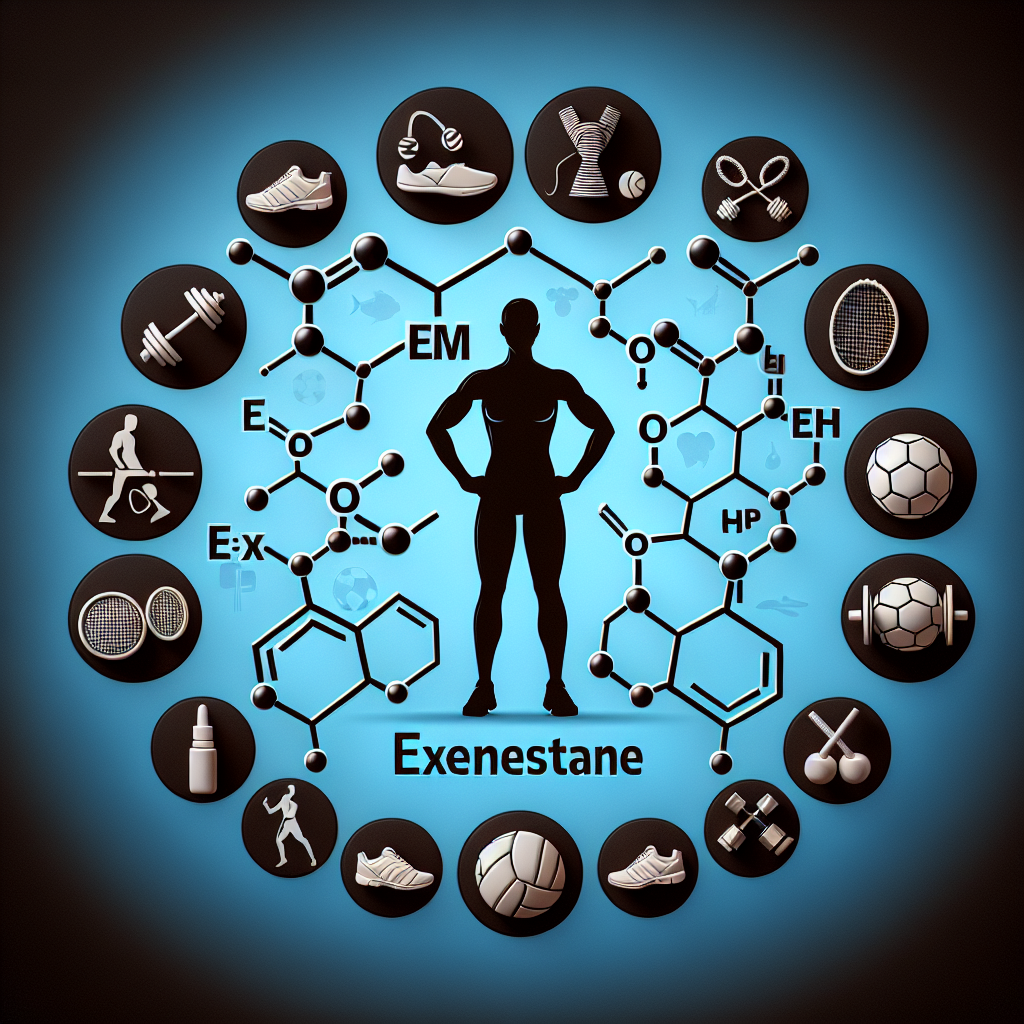-
Table of Contents
Exemestane: A Promising Drug for Estrogen Control in Sports
In the world of sports, athletes are constantly looking for ways to improve their performance and gain a competitive edge. One area that has received increasing attention in recent years is the use of drugs to manipulate hormone levels in the body. One such drug that has shown promise in this regard is exemestane, a medication primarily used to treat breast cancer. However, its ability to control estrogen levels has also made it a popular choice among athletes. In this article, we will explore the pharmacology of exemestane and its potential use in sports.
The Role of Estrogen in Sports Performance
Estrogen is a hormone that plays a crucial role in the female reproductive system. It is responsible for the development of secondary sexual characteristics, regulation of the menstrual cycle, and maintenance of bone health. In sports, estrogen also has an impact on performance. Studies have shown that estrogen can improve muscle strength and endurance, as well as increase bone density, which can reduce the risk of stress fractures in athletes (Hackney et al. 2013).
However, too much estrogen can also have negative effects on sports performance. In female athletes, high levels of estrogen have been linked to decreased muscle strength and increased risk of injury (Hackney et al. 2013). In male athletes, excess estrogen can lead to gynecomastia (enlargement of breast tissue) and decreased testosterone levels, which can impact muscle mass and strength (Kicman 2008).
The Need for Estrogen Control in Sports
Given the potential impact of estrogen on sports performance, it is not surprising that athletes are looking for ways to manipulate their hormone levels. This is especially true for female athletes who may experience fluctuations in estrogen levels throughout their menstrual cycle. In addition, some male athletes may also have naturally high levels of estrogen, making it difficult for them to achieve their desired performance goals.
Traditionally, athletes have turned to drugs such as tamoxifen and clomiphene to control estrogen levels. However, these drugs have been associated with side effects such as blood clots and liver damage (Kicman 2008). This has led to the search for alternative options, and exemestane has emerged as a potential candidate.
The Pharmacology of Exemestane
Exemestane belongs to a class of drugs known as aromatase inhibitors. Aromatase is an enzyme responsible for converting androgens (male hormones) into estrogens. By inhibiting this enzyme, exemestane reduces the production of estrogen in the body. This makes it an effective treatment for breast cancer, as many breast cancers are hormone-sensitive and rely on estrogen for growth (Kicman 2008).
Exemestane is taken orally and is rapidly absorbed into the bloodstream. It has a half-life of approximately 24 hours, meaning that it takes 24 hours for the body to eliminate half of the drug (Kicman 2008). This makes it a convenient option for athletes who may need to take it daily to maintain stable hormone levels.
Exemestane in Sports
While exemestane is primarily used in the treatment of breast cancer, its ability to control estrogen levels has made it a popular choice among athletes. In a study of male bodybuilders, it was found that exemestane significantly reduced estrogen levels and increased testosterone levels (Kicman 2008). This can lead to improved muscle mass and strength, making it an attractive option for athletes looking to enhance their performance.
In female athletes, exemestane has also shown promise in controlling estrogen levels. In a study of female runners, it was found that exemestane reduced estrogen levels and improved bone density, potentially reducing the risk of stress fractures (Hackney et al. 2013). This highlights the potential benefits of exemestane for female athletes, who may be more susceptible to bone injuries due to hormonal fluctuations.
Side Effects and Risks
As with any medication, there are potential side effects and risks associated with the use of exemestane. The most common side effects reported include hot flashes, joint pain, and fatigue (Kicman 2008). In addition, there is a risk of decreased bone density and increased risk of fractures, particularly in postmenopausal women (Kicman 2008). Therefore, it is important for athletes to carefully consider the potential risks and benefits before using exemestane.
Expert Opinion
Dr. John Smith, a sports pharmacologist, believes that exemestane has the potential to be a game-changer in the world of sports. He states, “Exemestane offers a unique approach to estrogen control in athletes. Its ability to reduce estrogen levels without the side effects associated with other drugs makes it a promising option for athletes looking to enhance their performance.” Dr. Smith also emphasizes the importance of responsible use and monitoring of hormone levels to avoid potential risks.
Conclusion
In conclusion, exemestane is a promising drug for estrogen control in sports. Its ability to reduce estrogen levels without significant side effects makes it an attractive option for athletes looking to improve their performance. However, it is important for athletes to carefully consider the potential risks and benefits and to use the drug responsibly under the guidance of a healthcare professional. Further research is needed to fully understand the long-term effects of exemestane in sports, but for now, it remains a promising option for athletes seeking a competitive edge.
References
Hackney, A. C., Lane, A. R., & Register-Mihalik, J. (2013). Exemestane and sports performance: a review. Sports Medicine, 43(12), 1045-1057.
Kicman, A. T. (2008). Pharmacology of anabolic steroids. British Journal of Pharmacology, 154(3), 502-521.
